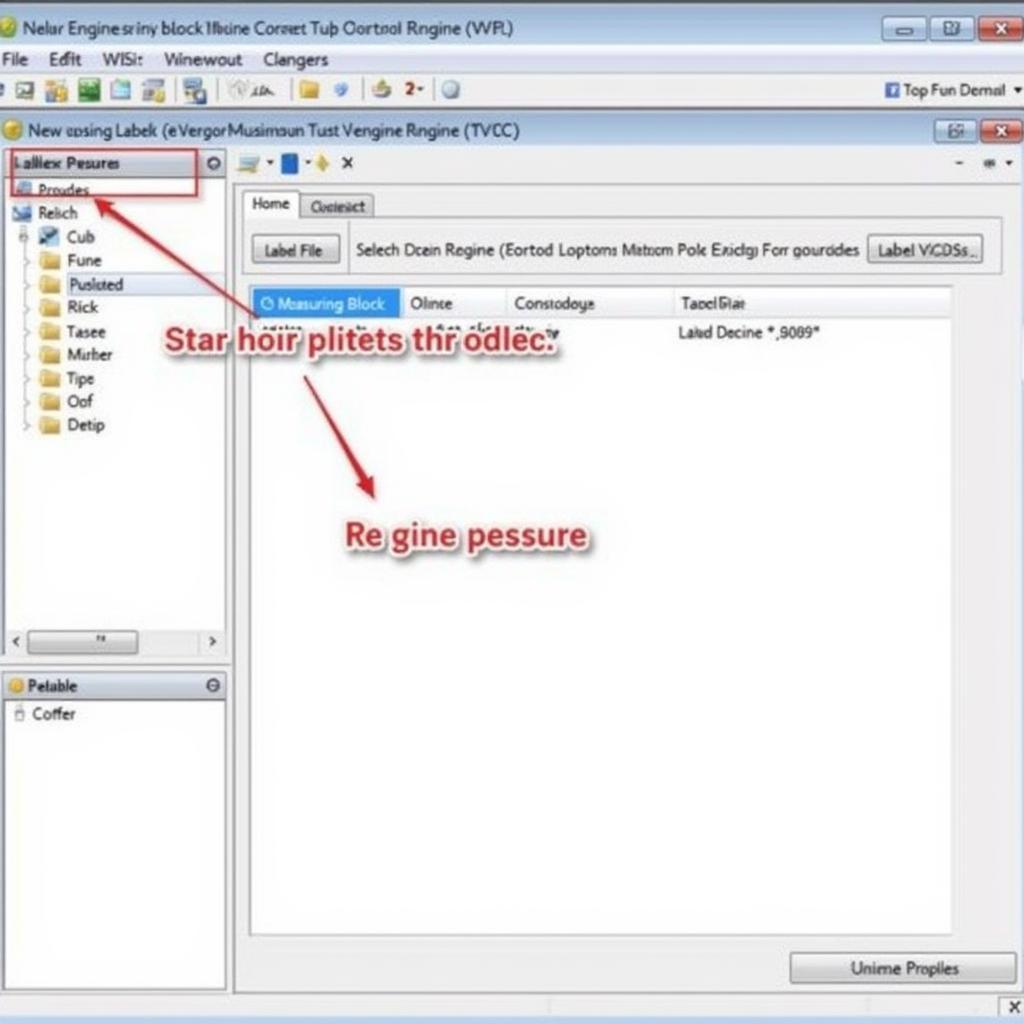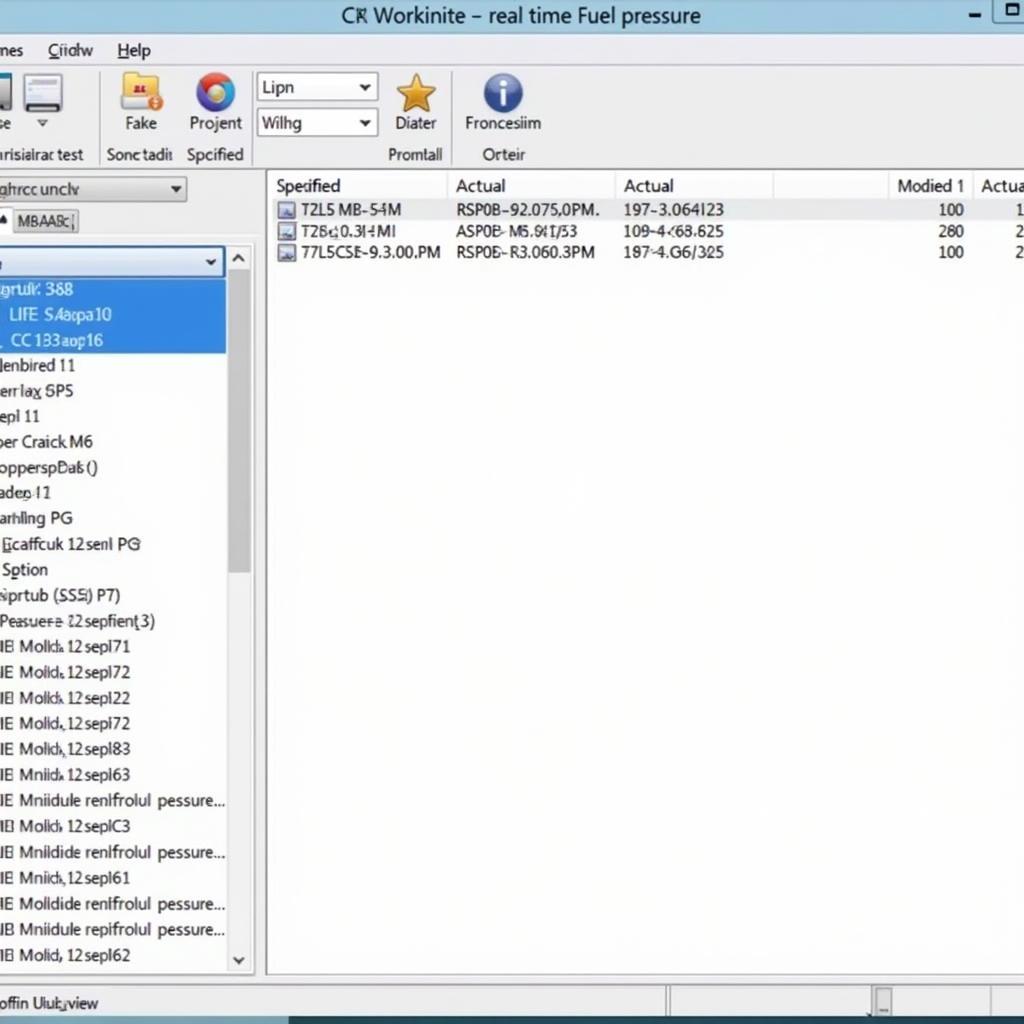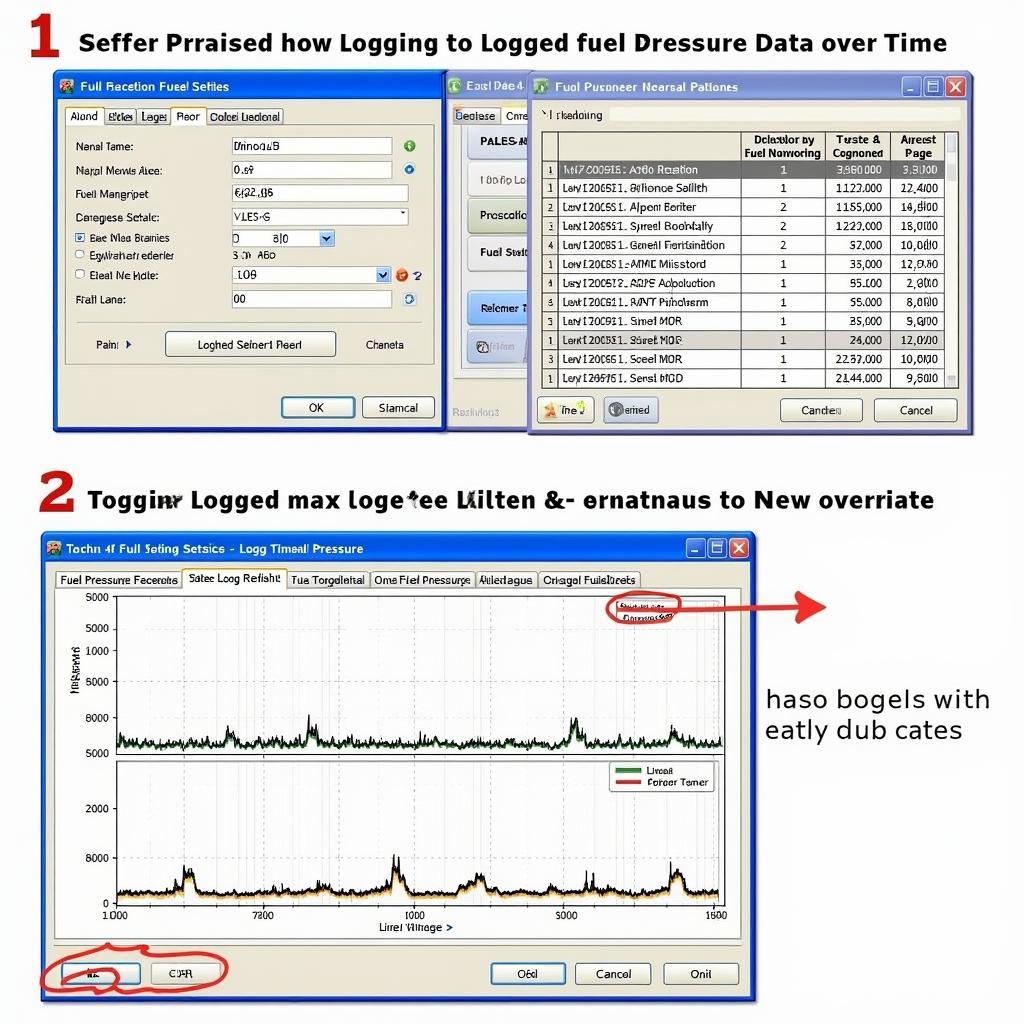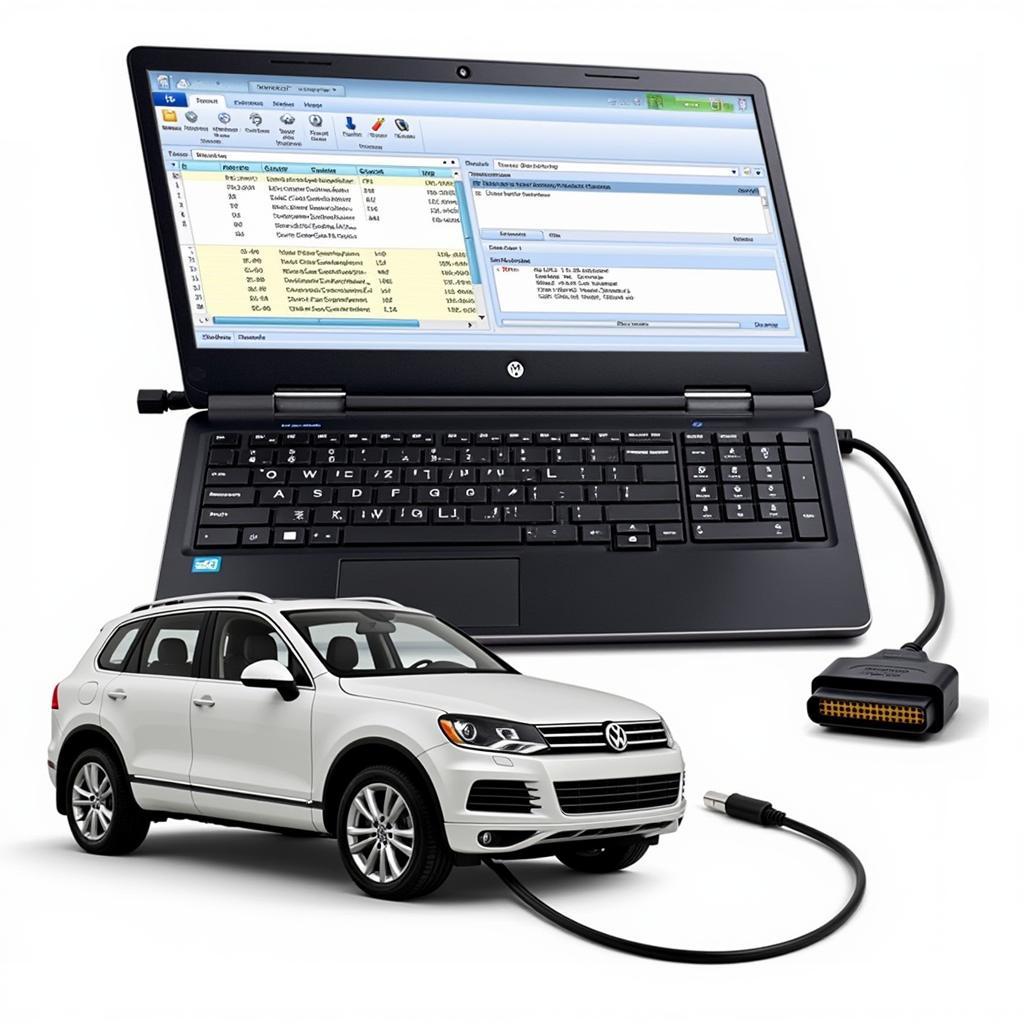Understanding fuel pressure is crucial for diagnosing and resolving performance issues in modern vehicles. The VCDS fuel pressure measuring block provides a powerful tool for accessing this critical data. This guide will delve into the intricacies of using VCDS to measure fuel pressure, empowering you to pinpoint and address fuel-related problems effectively.
Decoding the VCDS Fuel Pressure Measuring Block
The VCDS software, also known as VAG-COM, allows access to a vehicle’s control modules, including the engine control unit (ECU). Within the ECU, specific measuring blocks contain real-time data streams, including fuel pressure readings. These readings can be invaluable in diagnosing issues such as low power, rough idling, or poor fuel economy. Locating the correct measuring block for fuel pressure can vary depending on the specific vehicle model and engine type. Consulting the VCDS label file for your particular car is essential for pinpointing the correct block.
 Locating the Fuel Pressure Measuring Block in VCDS
Locating the Fuel Pressure Measuring Block in VCDS
Interpreting Fuel Pressure Data with VCDS
Once you’ve located the VCDS fuel pressure measuring block, interpreting the data is the next step. The readings are typically displayed in units of bar or psi. Comparing these readings to the manufacturer’s specifications is vital. Low fuel pressure can indicate a failing fuel pump, clogged fuel filter, or a faulty fuel pressure regulator. Conversely, excessively high fuel pressure can point to a malfunctioning fuel pressure regulator or a blockage in the return line.
“Accurate fuel pressure readings are the cornerstone of effective fuel system diagnostics,” says John Miller, a veteran automotive diagnostician with over 20 years of experience. “VCDS provides a direct window into this crucial data, enabling precise identification of the root cause.”
Common Fuel Pressure Problems Diagnosed with VCDS
Several common fuel-related issues can be diagnosed using the VCDS fuel pressure measuring block. These include:
- Low Fuel Pressure: Often caused by a failing fuel pump, clogged fuel filter, or a faulty fuel pressure regulator. Symptoms include difficulty starting, poor acceleration, and engine misfires.
- High Fuel Pressure: Typically indicates a malfunctioning fuel pressure regulator or a blockage in the return line. This can lead to excessive fuel consumption and potential damage to fuel injectors.
- Fluctuating Fuel Pressure: This can be a sign of a failing fuel pump, a leak in the fuel system, or a problem with the fuel pressure sensor itself.
 Analyzing Fuel Pressure Data in VCDS
Analyzing Fuel Pressure Data in VCDS
Utilizing VCDS for Advanced Fuel System Diagnostics
Beyond simply reading fuel pressure values, VCDS can be used for more advanced diagnostic procedures. For instance, you can monitor fuel pressure during specific driving conditions to identify intermittent issues. You can also log fuel pressure data over time, providing a valuable record for further analysis. This is especially useful for tracking down elusive problems. For related information on boost pressure monitoring using VCDS, refer to our guide on vcds boost pressure.
“Logging fuel pressure data with VCDS allows you to see the bigger picture,” adds Sarah Johnson, a certified master technician. “This historical data can be crucial in diagnosing intermittent problems that might otherwise be missed.”
 Performing Advanced Fuel System Diagnostics with VCDS
Performing Advanced Fuel System Diagnostics with VCDS
VCDS Fuel Pressure: Key Takeaways
Mastering the use of the VCDS fuel pressure measuring block is an essential skill for any automotive technician or enthusiast. This powerful tool allows for precise diagnosis of fuel-related problems, saving you time and money. For further information regarding fuel filter diagnostics with VCDS, particularly for VW TDI vehicles, you can consult our guide on vw tdi fuel filter vcds. Those interested in using VCDS for other diagnostics can refer to our resources on how to log timing vcds b8 s4 and how to test fuel injection pump with vcds. You can also find helpful information on vcds measuring blocks fuel pressure. By understanding how to interpret fuel pressure readings, you can effectively pinpoint the root cause of fuel system issues and ensure optimal vehicle performance.
Conclusion
The VCDS fuel pressure measuring block provides a crucial diagnostic window into the heart of your vehicle’s fuel system. By understanding how to interpret these readings and utilize the advanced features of VCDS, you can effectively diagnose and resolve fuel-related problems, ensuring optimal engine performance and reliability.
FAQ
- What units are VCDS fuel pressure readings typically displayed in? Bar or psi.
- Why is consulting the VCDS label file important? To locate the correct measuring block for your specific vehicle.
- What does low fuel pressure indicate? A potential issue with the fuel pump, filter, or regulator.
- What can cause high fuel pressure? A faulty fuel pressure regulator or blockage in the return line.
- How can VCDS be used for advanced fuel system diagnostics? By logging fuel pressure data over time and monitoring it under various driving conditions.
- Where can I find information on VCDS measuring blocks for fuel pressure? vcds measuring blocks fuel pressure
- What resource can I use to learn more about using VCDS with VW TDI fuel filters? vw tdi fuel filter vcds
Need assistance? Contact us via Whatsapp: +1 (641) 206-8880, Email: CARDIAGTECH[email protected] or visit us at 276 Reock St, City of Orange, NJ 07050, United States. Our customer service team is available 24/7.

